SPRING THREAD LIFT
Surgical thread lifting is an alternative to conventional surgery and can give long-lasting results. The specially designed threads are unique and can be used to lift the neck, sagging jowls, cheeks and eyebrows. Our leading Dr is a pioneer in the technique of Thread Lifting and is highly regarded as an expert in this area of aesthetic medicine.
We categorise Thread Lifting into three areas. Surgical Thread Lifting uses special threads, which are surgically inserted and attached to fixed structures which provides stability. We use a unique Thread that has ‘elastic’ qualities for the procedure known as the ‘Elastic Facelift’. These spring threads move naturally with the face and integrate with the skin’s tissues giving long-lasting results that improve over time. Excess skin can be removed at the same time and the results are comparable to a surgical facelift.
This procedure is suited to those patients that are looking at an alternative to surgery , are too young for surgery or already had surgery and have noticed the results have started to “relax”.
We use Surgical Threads to:
- Lift and reposition sagging skin
- Define areas that have lost laxity
- Reposition facial contours
- Stimulate collagen production for skin tightening and volume
Areas that can be treated with PDO Threads
- Eyebrows
- Cheeks
- Jowls
- Neck
Treatment time
This will depend on the number of areas treated and normally take 45 – 90 minutes.
Recovery Time
It is recommended that patients take 7 to 10 days off their normal work and social commitments following the procedure. Following surgery, the face can be noticeably swollen and there is likely to be bruising. Facial movements are restrictive for several days after the surgery and a head garment is worn continually for the first 3 days.
Results Duration
The threads used for this surgical procedure are permanent and do not dissolve. The natural ageing process continues, which varies from patient to patient. The results are comparable to conventional surgical techniques and are expected to last for 3 to 5 years.
Treatment Price
Prices start from £1,400.
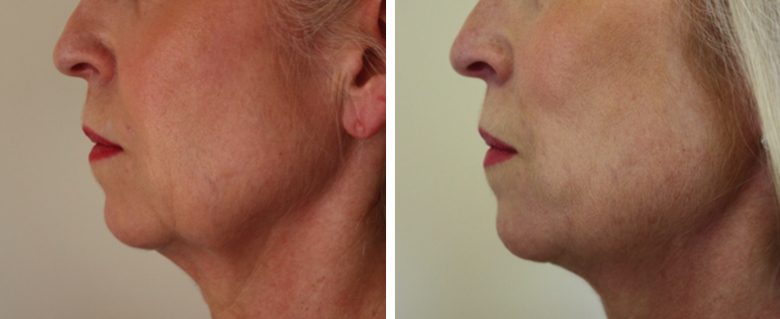
Before and after treatment.
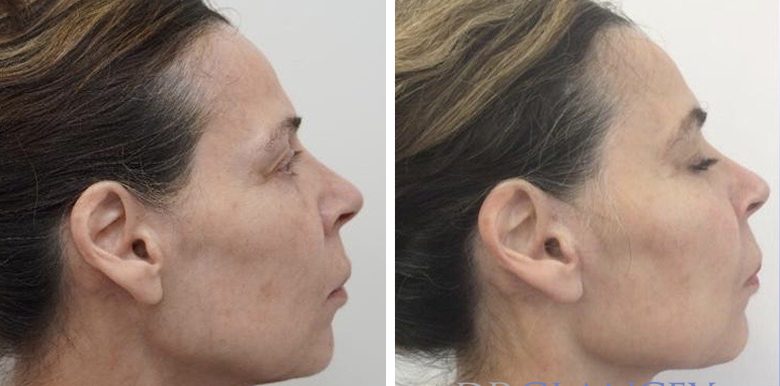
Before and after treatment.
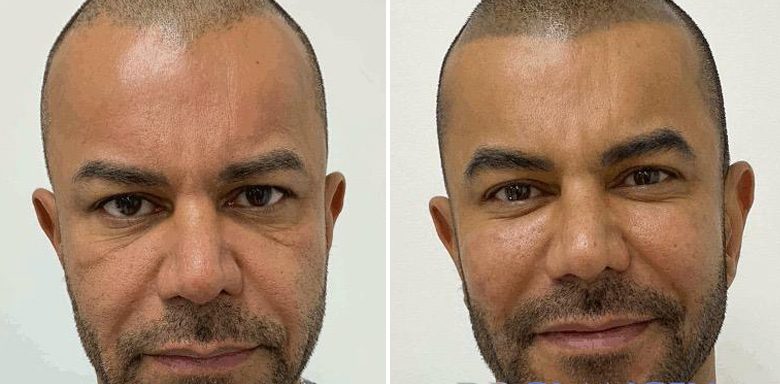
Before and after treatment.
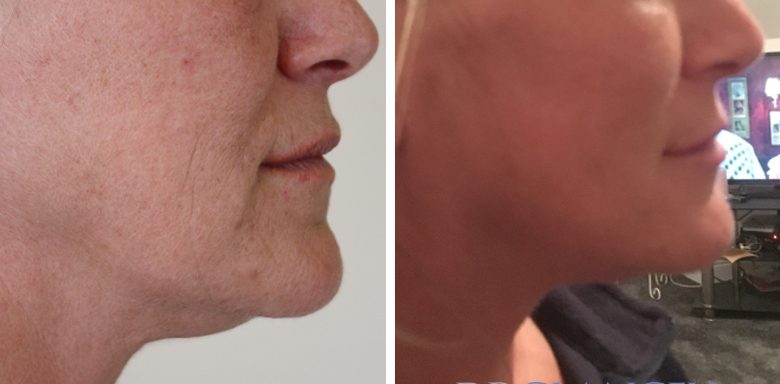
Before and after treatment (3 weeks).
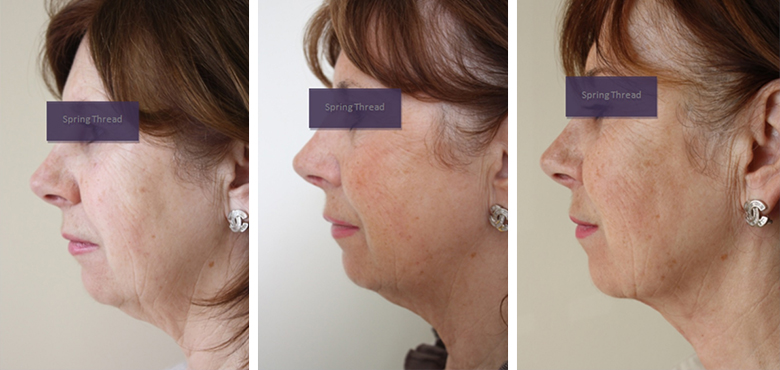
Stages of treatment.
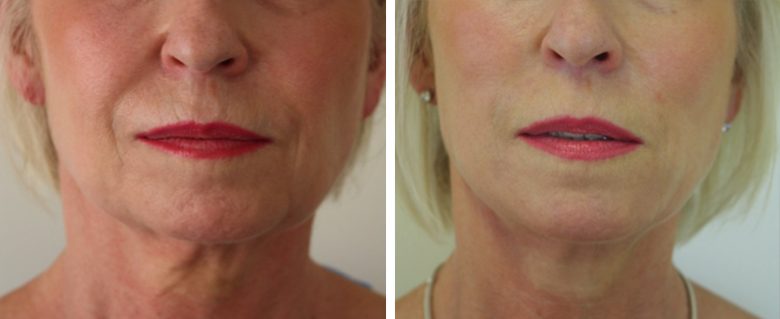
Before and after treatment.
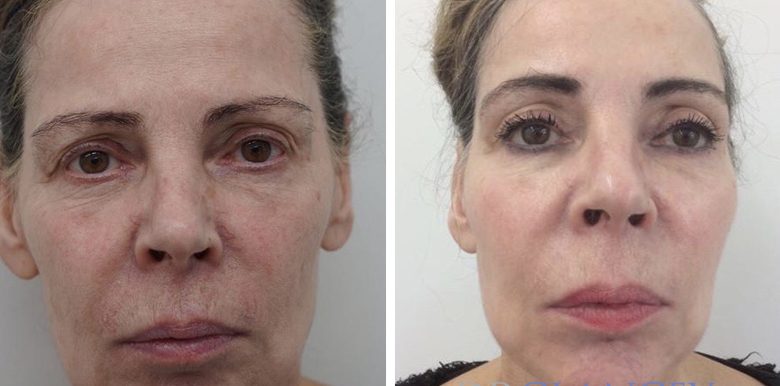
Before and after treatment.
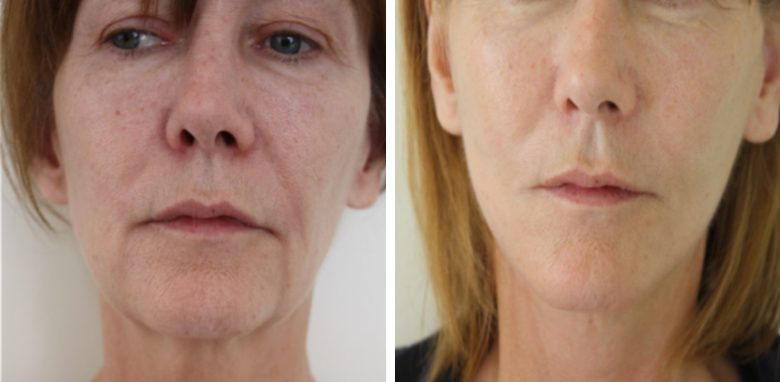
Before and after treatment (8 months).
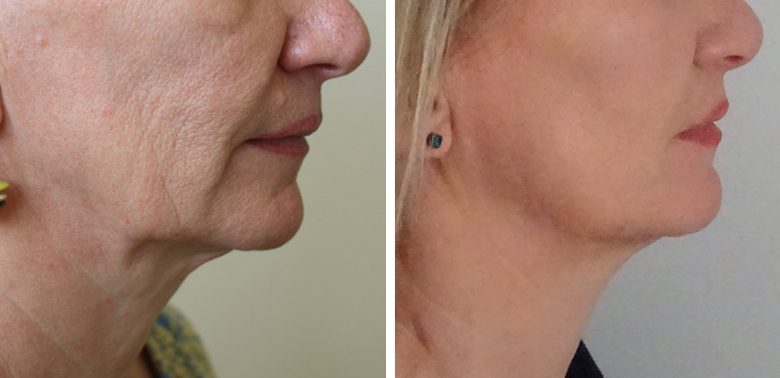
Before and after treatment (18 months).
FAQS
What is the difference with the Spring Surgical Threads compared with other Threads used for surgical Lifting?
The difference with these ‘elastic’ spring threads compared to other surgical threads is their ability to integrate with the tissues but at the same time allow free unrestricted movement.
Nearly all other surgical threads are ridged and ‘fixed’ in the skin, while the spring threads are ‘elastic,’ which allows them to move with facial movements. They are fixed in such a way ensuring a long-lasting lift that can be tightened over the years without further surgery.
What is the ‘Elastic Face Lift’ ?
Our leading Dr has developed several techniques using the spring threads. These have ‘cogs’ along their length, allowing the thread to ‘fix’ into the skin for a long-lasting lift and also stimulating the deposition of collagen, which further strengthen the underlying tissue. The Elastic Face Lift allows the threads to be re tightened over the years without needing more threads.
What are the benefits of The Spring Threads?
Thread Lifting is a minimally invasive surgical technique that has been around for many years. There were numerous threads on the market but they had their limitations. The new generation of ‘Spring Threads’ are the most advanced and natural-looking on the market. They provide the flexibility and strength required to maintain lift whilst at the same time allowing the skin and surrounding tissues to move naturally, without restriction and complete muscle mobility.
Who is suitable for a Surgical Thread Lift?
Typically the most suitable candidates for this procedure are aged 35-55 years old and have started experiencing facial sagging and loss of contour in the jaw area. The procedure is ideal for those patients that are ready for a face-lift but do not want invasive surgery.
Each procedure is unique to the individual and the ‘lift’ can be designed based on the patient’s anatomy and specific ageing concerns.
Does the Thread Lift require a general anesthesia?
No, and this is another advantage with this procedure. The procedure is performed under local anesthesia and if patients feel in any way anxious then oral sedation can be given to allow the procedure to be performed completely comfortably.
How long is the recovery time?
Depending on the technique patients can go back to their normal activities within 4-8 days. Full recovery can take up to 3 weeks and caution must be taken during this recovery period to ensure the threads ‘set’ and retain the lift. We recommend that for 1-2 weeks following the procedure that patients eat soft to medium foods and limit exaggerated facial movements. Patients may experience bruising, swelling and a degree of skin ‘bunching’ which will settle in 1-3 weeks but can be easily covered by the hair.
How long do the results last?
We anticipate that the results will be at their best for around three years; however this varies from patient to patient and is dependent on the individual ageing process. Furthermore it is possible to re-tighten the lift after a period of time, thus maintaining it even longer.
What results can I expect?
The results are first and foremost natural. Your appearance is less tired and refreshed. There is no compromise to your facial movements and the facial proportions will be subtly restored.
What are the risks with a Surgical Thread Lift?
As with any surgical procedure there are risks and these are explained during your consultation. As the procedure is performed with local anesthetic the risk from general anesthetic is removed, which is appealing to may patients and this also includes patients that may not be able to have a general anesthetic due to health reasons. Patients can expect bruising and swelling following the procedure but less compared to open surgery and there are no drains and big scars following this surgery .

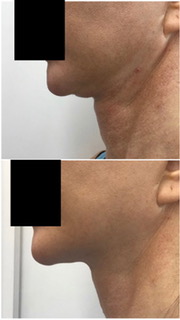
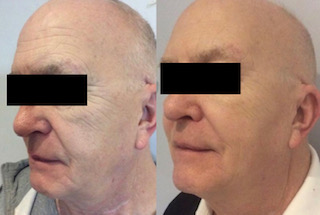
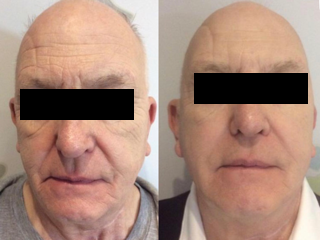
 Call Now
Call Now